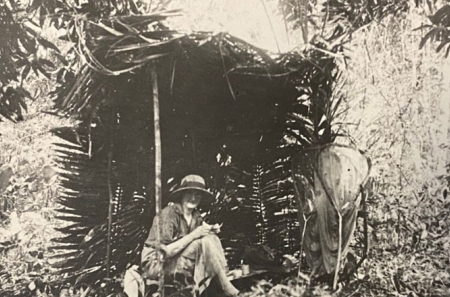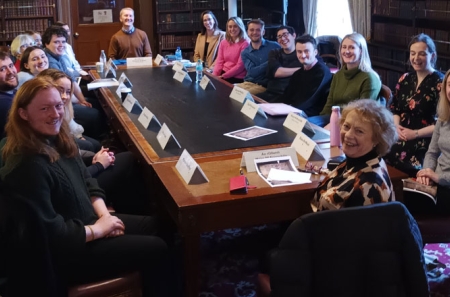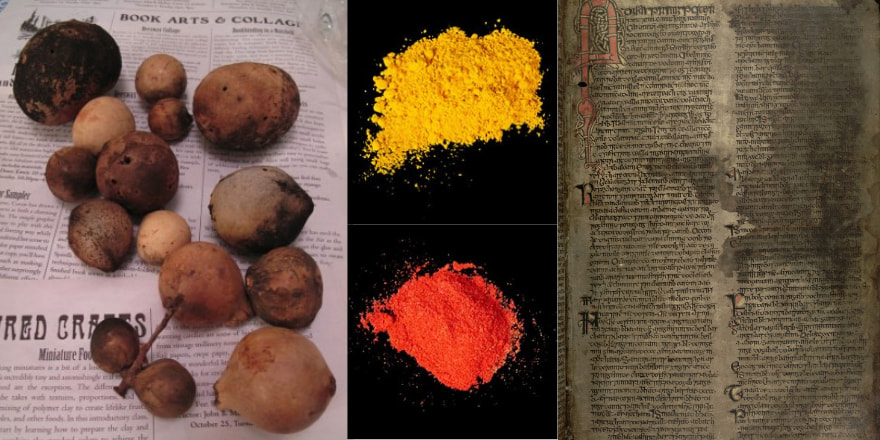
Investigating inks and skins at the RIA Library
02 October 2023In this month’s Library blog, we are delighted to have an informative piece by Prof. Pádraig Ó Macháin, Professor of Modern Irish at University College Cork (UCC). Pádraig is also Principal Investigator on the Inks and Skins Project and in this blog post he tells us more about the project.
Since its inception in 2019, the Inks and Skins Project has benefited greatly from its core collaboration with the Royal Irish Academy Library. This collaboration was built on an earlier and still ongoing one between the Library and Irish Script on Screen (ISOS), which I co-founded in 1998 and directed until 2012. The collaboration with ISOS was, and continues to be, very fruitful; so too the present collaboration with Inks and Skins. Both projects are characterized by a shared sense of purpose and are informed by a collaborative spirit of enquiry.
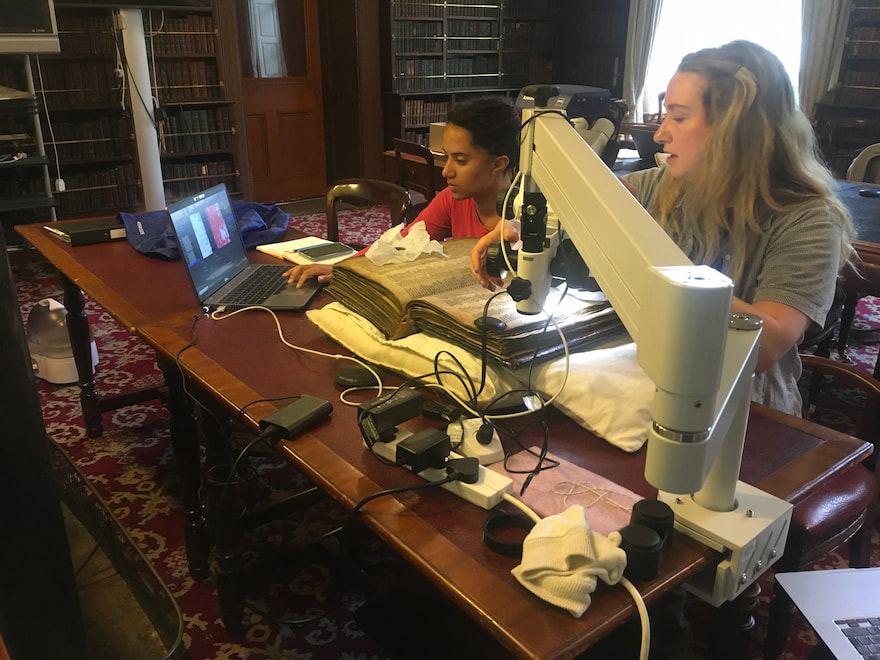
[Fig. 1 – Inks and Skins Project members at work.]
Inks and Skins is funded by the Irish Research Council through an Advanced Laureate Award. The purpose is to investigate, using scientific methodologies combined with palaeography and codicology, the materiality of the vernacular Gaelic manuscript during the period 1000–1600 (the vellum period). The project focuses specifically on analysis of inks, pigments and parchment. In asking questions about the materials in these remarkable hand-made books, we hope to learn more about the working methods of the scribes and learned families of late-medieval Ireland.
The primary target of the project is the Book of Uí Mhaine (RIA MS D ii 1), a manuscript made for the Uí Cheallaigh (O’Kellys) of east Galway and south Roscommon towards the end of the 14th century. We have paid particular attention to the eight folios that comprise the 10th quire, as this is a section of the book that is complete in itself, where both scribe and patron are identified. It was written by Faelán Mac an Ghabhann na Scéal, of a distinguished north-Tipperary learned family, for Muircheartach Ó Ceallaigh, who was at the time Bishop of Clonfert, and who was elected Archbishop of Tuam in 1392. Faelán completes his work with a colophon in which he asks the Bishop not to lend the quire (caidirne) to his friend. This is a token of the esteem in which the scribe held his own work, which included not just writing and decorating the 16 pages, but also sourcing and carefully selecting the material that he wrote on them. That material comprises a mixture of traditional and biblical prose, verse and genealogies.
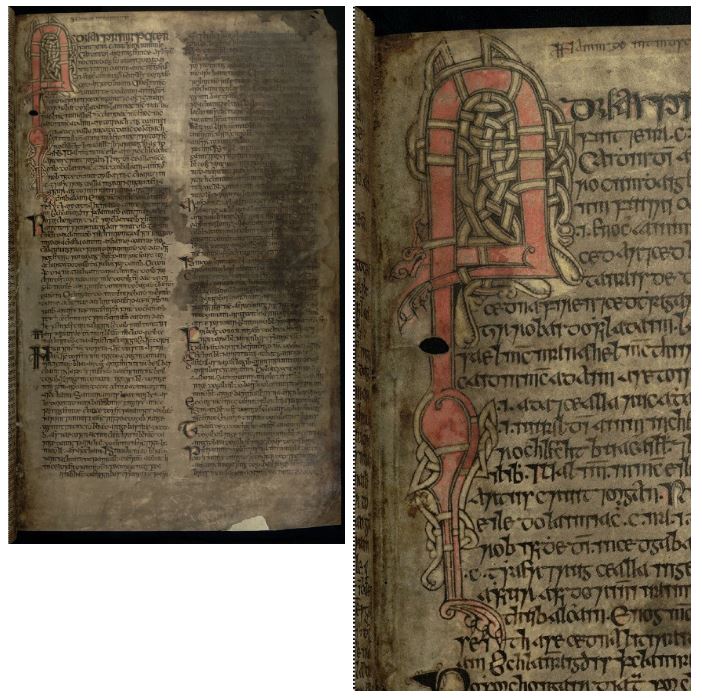
[Fig. 2 – Book of Ui Mhaine (RIA MS D ii 1) f.48r.] [Fig. 3 – Detail of the decorated initial on f.48r.]
On the opening page (f. 48r) of this quire Faelán signals the importance of his work with the largest and finest decorated initial in the whole manuscript, the initial A of ‘Adam’, with which – appropriately and deliberately – the opening text (‘Adam primus pater fuit’) begins. The mechanics of the writing of this page are instructive.
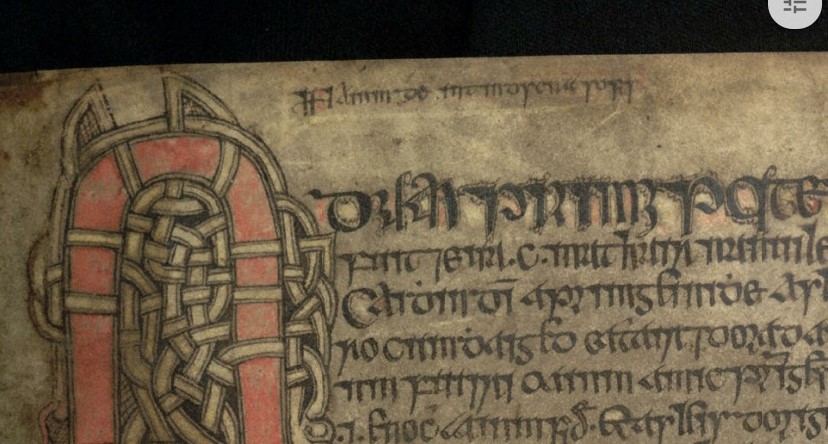
[Fig. 4 – Detail of where Faelán, the scribe, tested his pen on f.48r.]
Following ruling, and before either text or initial letter were attempted, Faelán tested his pen. He did this by inscribing a brief scribal prayer in the upper margin, outside of the text-grid. This prayer served the dual function of testing materials and invoking spiritual help for the project upon which he was about to embark. The invocation reads: ‘IN ainm dé. in tindscna so sís’ ('In the name of God. this beginning below').
The opening initial was then drawn in outline in ink, extending from the upper margin downwards for a length of 22 lines of the 58-line left-hand column. The text was then inserted, in the same ink, beginning with a single line of display-script, the writing accommodating itself to the outline of the opening initial at the points where it encroached on the text-space.
Following the writing of the text, colour was added to the opening initial and to the lesser initials and capitals throughout. Only two colours were used: red and yellow. These were first tested by creating a box around the pen-test/prayer at the top of the opening page: half the box is in red, half in yellow. Further pen-tests for ink and colour were made as the writing progressed.
The principal technology used to analyse the writing in the Book of Uí Mhaine comprised (a) Multi-Spectral Imaging, which provided 15 images, from ultra-violet to infra-red, of each of the surviving 314 pages, giving an important overview of the manuscript, and allowing for analytic procedures such as false colouring and principal component analysis; (b) X-Ray Fluorescence (XRF) spectroscopy of the inks and pigments in order to identify the inorganic components of the materials; (c) Fiber Optic Reflectance spectroscopy (FORS) in order to identify the organic elements; (d) optical microscopy for close-up inspection and photography of ink and pigment patterns and degradation.
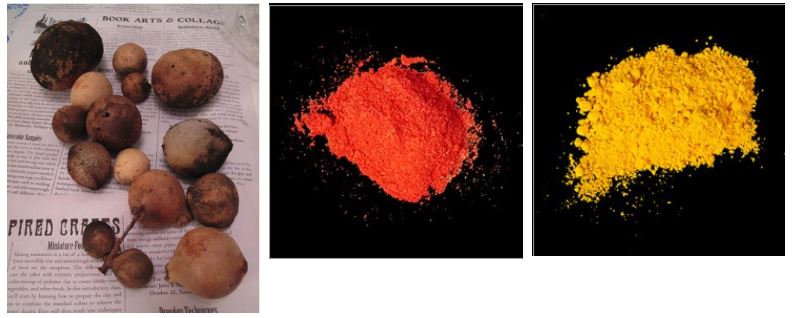
[Fig. 5 – Oak galls to make into iron gall-ink.][Fig. 6 – Vermillion pigment.][Fig. 7 – Orpiment pigment.]
Analysis of Faelán’s quire in the Book of Uí Mhaine showed an iron gall-ink in use throughout, as was the case with the entire manuscript. The pigments used in the colouring – exclusively red and yellow – are vermillion and orpiment respectively, two of the handful of staple pigments used in Gaelic manuscripts. Elsewhere in Uí Mhaine minium (red-lead) is also in evidence, but orpiment is unvarying for yellow. The binder was identified as egg-white.
To contextualize our study of the Book of Uí Mhaine, the project has analysed many other Gaelic manuscripts from the late-medieval period, as well as manuscripts from the early Church, municipal/administrative manuscripts, late-medieval monastic manuscripts, and English and Continental manuscripts of the same period. When complete, in combination with codicological and palaeographical details, the results should provide us with new insights into the workings of the Gaelic scribe/scholar, as well as with a panorama of scribal activity across different cultural situations. It is to be hoped that all of this will form a foundation for future research.

